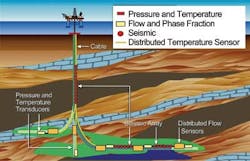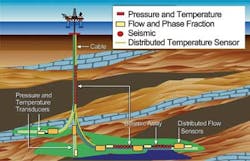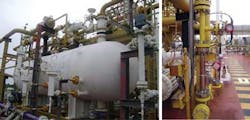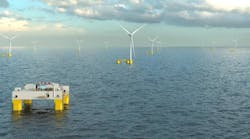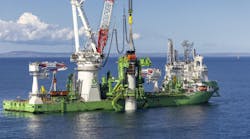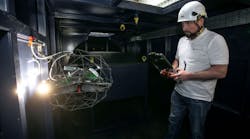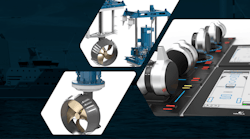Rajan Chokshi
Weatherford
Whether operating in greenfield or brownfield environments, it is essential for oil and gas producers to obtain an accurate assessment of each asset's production capability. This enables them to develop prudent reservoir management and practical production strategies related to artificial lift, flow assurance, monitoring of installation integrity, and QHSSE. Also, as production activities move to more challenging locations like deepwater, subsea, and high-pressure/high-temperature (HP/HT) environments, the stakes become higher, making key production information even more valuable.
Conventionally, well test measurements, coupled with production logging and wellbore gradient surveys, have been used to assess the productive capabilities of a well. However, the frequency of such data captures is inadequate to address the dynamic production changes that are common in offshore installations. A related challenge is the lack of synchrony among these data sets, which often leads to inaccurate predictions of production behavior. This, in turn, can result in delayed, wrong, and often expensive intervention decisions.
A better solution to protect high-value investments in offshore and subsea installations is to take a proactive approach, using real-time downhole, subsea, and surface measurements to monitor and analyze well performance. This enables operators to curtail performance deterioration and deter imminent failure of downhole artificial lift equipment, as well as to tailor preemptive responses to potentially unsafe conditions such as hydrate, asphaltene, or wax precipitation.
Rather than wait until well tests or other symptom-discovery tests are conducted, reservoir managers would prefer to receive immediate information about changes like water breakthroughs or production response to secondary or tertiary recovery approaches. Having access to a well's downhole pulse—in the form of real-time downhole pressure and temperature readings, surface or downhole flow rates, and even water-cut measurements—is invaluable in performance- and compliance-conscious environments.
Different approaches
Today, subsurface technologies enable real-time production surveillance for pressure, temperature, flow, and vibration measurements. On top of that, recent advances in flow technologies permit measurement of water cut, as well as flow rates at wellheads or near central processing sites with partial or no separation. Such capabilities are especially useful in offshore environments, where valuable deck space that is typically allotted to expansive separation facilities could be saved by using inline, no-separation measurement technologies. A recent entry in this space enables real-time water-cut measurement in the production stream from a subsea well. Whether obtained from subsurface or surface instruments, measured data transmits telemetrically to a process platform en route to a shore-based field office or corporate location.
Subsurface measurements
Subsurface measurement technologies can be classified into two broad categories: electronics-based and fiber optics-based.
Electronics-based technologies are used for routine applications with moderate temperature and pressure ranges. These high-volume, economical gauges are used extensively for pressure, temperature, and vibration measurements in artificial lift monitoring, producer and injection well surveillance, and zonal production management applications. In artificial lift applications, the ability to combine the pump intake and discharge pressures with vibration data enables a continuous health check of equipment—in addition to proactive lift adjustments—so that equipment deliverability is matched closely to reservoir capability. Proactive lift management avoids underutilizing equipment by making adjustments to ensure that lift volume corresponds adequately with available, safe reservoir volumes. Conversely, it also aims to avoid lift equipment damage that can result from using incorrect settings or oversized equipment and outrunning reservoir deliverability. Recent developments in quartz-based technology enable sensing at higher pressures and temperatures with better resolutions, higher-frequency data updates, and up to 16 sensing locations on a single conductor cable.
Fiber optics-based downhole sensing technologies have been in use for more than two decades, and they have proven their value while providing improved reliability. Distributed temperature sensing (DTS) using fiber optics is a well-known application, but distributed acoustic sensing (DAS) is another emerging technology in this area. However, the availability of robust, reliable point and multi-point sensors for pressure, temperature, flow, and seismic measurements has expanded possibilities considerably. Optical cable, which typically contains three or four fibers, can combine multiple measurements in the same cable and even in the same fiber. This capability opens up a wide range of permanent downhole sensing possibilities in a single well, on a single cable.
DTS and array temperature sensing (ATS) point sensors each have advantages and disadvantages. For example, DTS allows spatial coverage over the entire length of a fiber-optic cable, but with a slower update rate and greater susceptibility to optical losses. ATS capabilities provide robust measurements up to ultra-high temperatures—even in the presence of higher optical losses—while delivering higher resolution and better stability with faster updates than DTS, but spatial coverage can be more limited.
Combinations of ATS and DTS are now available and can, in some cases, provide the optimal downhole temperature profiling and monitoring solution.
Fiber optics-based downhole flow measurement technology opens up unique possibilities, particularly for determining accurate allocation of multiple-zone production or injection. One notable feature of this nonintrusive technology is the bidirectional measurement capability for single- and two-phase flow measurements.
Displaying 1/2 Page 1,2Next>
View Article as Single page
